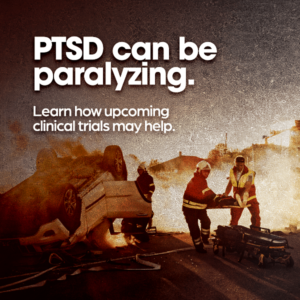Post-traumatic stress disorder (PTSD) has many names. Though we often associate it with combat veterans, PTSD can occur in people of any age, ethnicity, gender, and background. A person can have profound, lasting emotional and physical scars after experiencing a traumatic event. While some wounds aren’t visible with PTSD, hope lies in treatment, support, and research.
The Spark from a Traumatic Event
PTSD is a mental health condition that occurs after a traumatic event. It appears as a response to changes in the brain after exposure to threatening events. The exposure could be indirect, like learning about the death of a loved one or being threatened with death. It can also be a direct experience from a car accident or natural disaster. What’s traumatic to one person may not be to another.
Moreover, most people who experience such events recover from them. However, people with PTSD continue to be severely depressed and anxious for months or even years following the event. Women are twice as likely to develop PTSD as men, and their symptoms usually last longer on average.
PTSD Can Feel Like….
Long after the traumatic event has ended, individuals with PTSD continue to have intense, disturbing thoughts and feelings related to their experience. They may:
- Relive the event through flashbacks or nightmares
- Experience feelings of sadness, fear, or anger
- Feel detached or estranged from other people
- Avoid situations or people that remind them of the traumatic event
- Have strong adverse reactions to something as ordinary as a loud noise or an accidental touch.
PTSD can disrupt your normal activities and your ability to function. They often have trouble in their relationships with loved ones. The symptoms of PTSD can cause problems with trust, closeness, communication, and problem-solving. Ultimately, this influences the way they act with others.
Reducing the Effects of Trauma
PTSD affects people differently, so a treatment that works for one person may not work for another. The most common treatments for PTSD are talk therapy, medicines, or a combination.
- Talk therapy can teach you about your symptoms and how to identify what triggers them and how to manage them.
- Medicines reduce the symptoms of PTSD. For example, antidepressants may help control feelings of sadness, worry, and anger. Other options can help with sleep issues and nightmares.
Scientists and researchers continue learning more about potential causes and risk factors for PTSD. Someday, breakthroughs in research may make it possible to predict who is likely to develop this condition. This could also help in finding ways to improve treatments and ultimately prevent it.

You can help advance future options for PTSD as a clinical research volunteer. To learn more about current and upcoming study options here at Midwest Clinical Research, call (937) 424-1050 or visit our website today!
Sources:
https://www.healthline.com/health/post-traumatic-stress-disorder
https://www.psychiatry.org/patients-families/ptsd/what-is-ptsd













